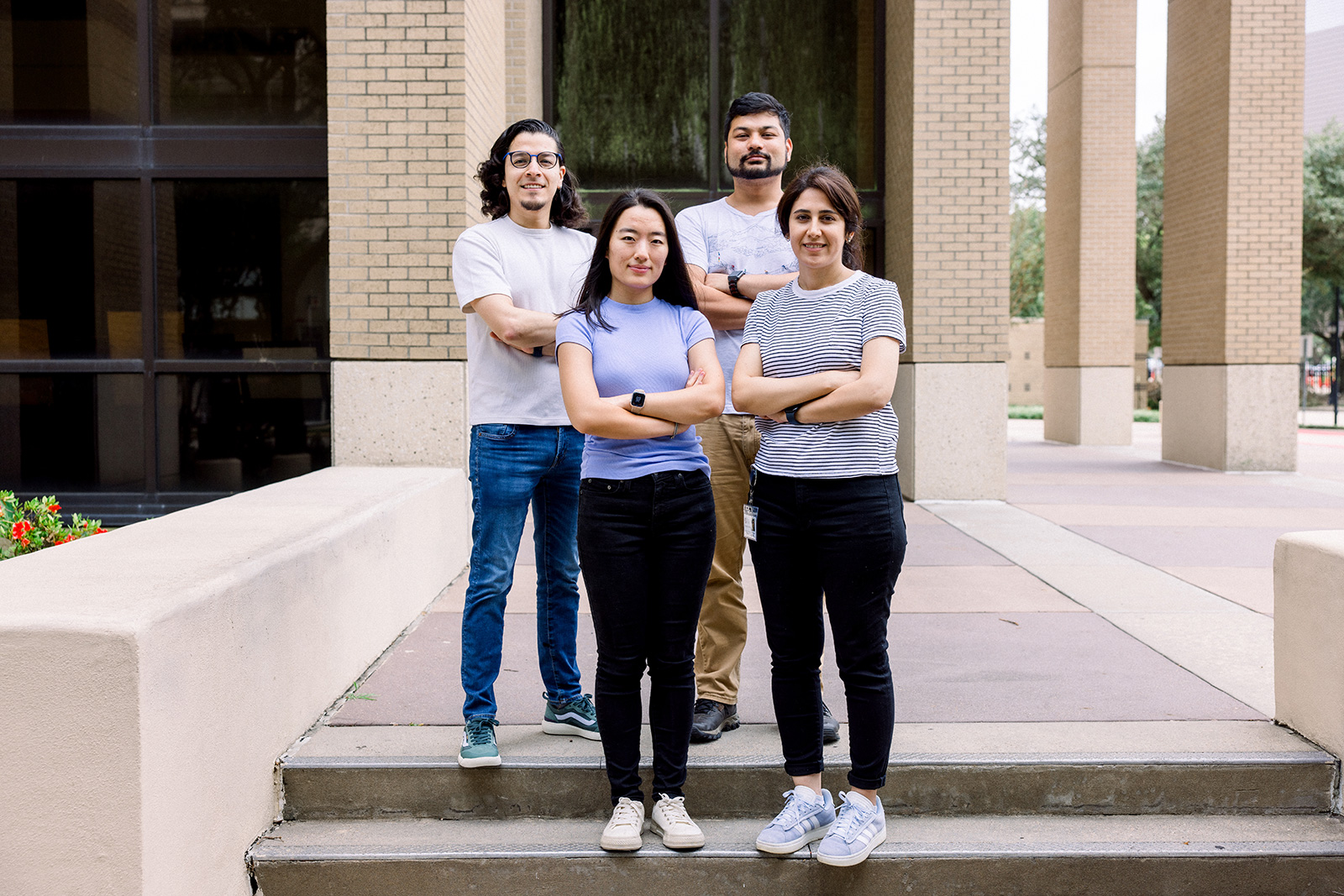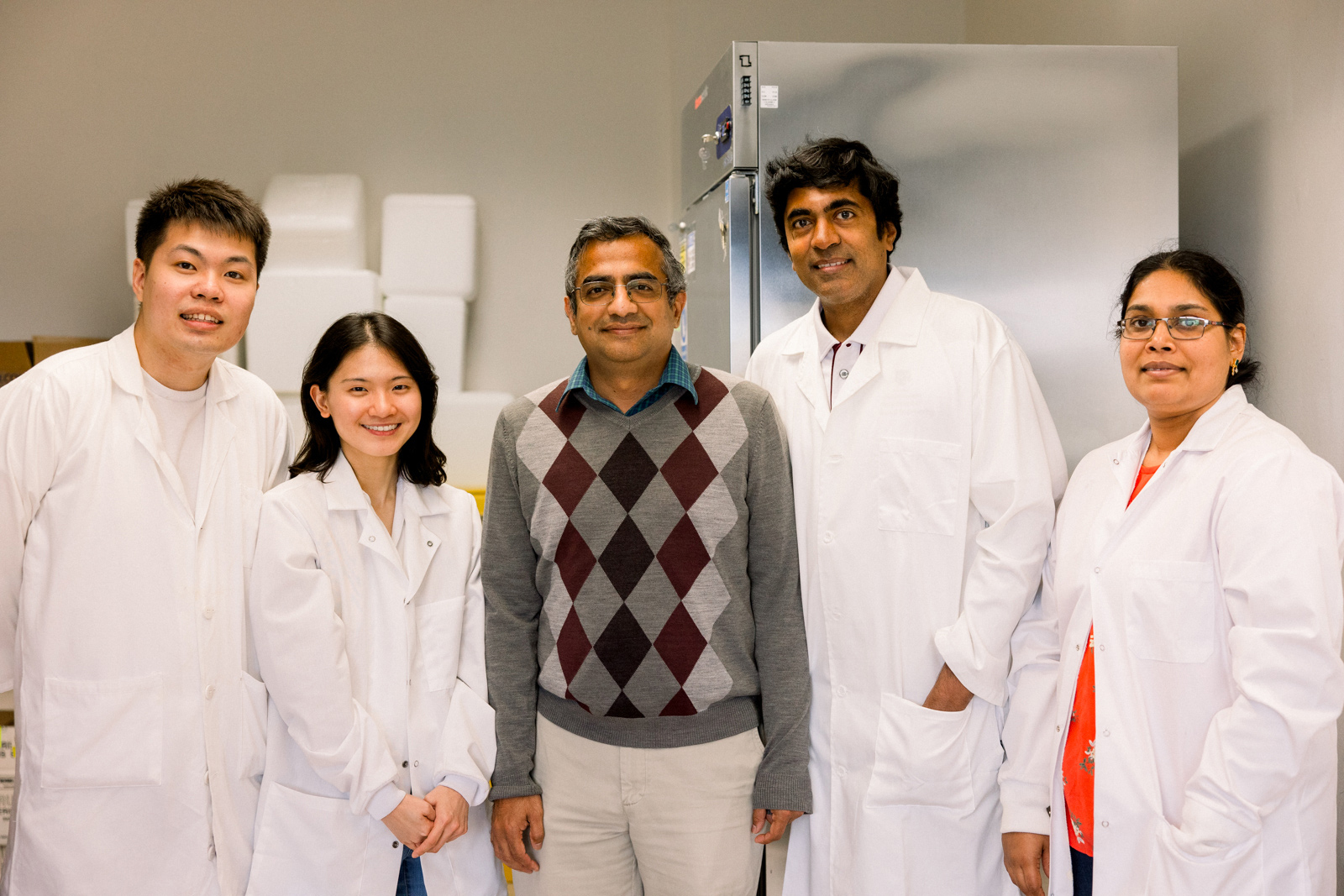In the heart of Houston, Texas, faculty and students in the Department of Biomedical Engineering at Texas A&M University are collaborating with clinicians, clinical-scientists, and researchers across the Texas Medical Center (TMC) to drive innovations in health technologies.
Ranging from focuses on cardiovascular computational models to cancer cell research, the biomedical engineering labs and groups housed in the Alkek Building — home to the Texas A&M Institute of Biosciences and Technology (IBT) — are strategically positioned to engage with neighboring organizations like MD Anderson Cancer Center, Houston Methodist Hospital, and the Texas Heart Institute.
The George Research Group

After joining the biomedical engineering department in 2020, Dr. Jason George, assistant professor in the Department of Biomedical Engineering, established his computational research group in Houston to understand and predict the behavior of complex biological systems like cancer and the immune system through mathematical, theoretical and statistical models.
The group is looking into how the immune system recognizes and handles foreign and malignant threats, how fluctuating microenvironments can affect cancer growth and how biological systems adapt to complex environmental changes.
“Our current research in cancer immunology has focused on developing predictive models for studying T cell-antigen interactions,” George said. “These models are directed at predicting immune responses to cancer, infectious diseases, and autoimmunity.”
The group works in tandem with nearby hospitals and research institutes to identify key questions to guide their research. Using mathematical theory in conjunction with real-life clinical data, the group designs improved therapeutic strategies based on how biological systems are predicted to evolve.
“Coordination between theory and observation is essential to guide important predictions for the dynamic responses of complex biological systems, such as cancer progression during immunotherapy,” George said. “We maintain active collaborations between many groups located in the Texas Medical Center, including A&M’s IBT, MD Anderson, Baylor College of Medicine, Texas Children's Hospital, and Rice University.”
The Lele Lab

The goal of the Lele Lab, with dual locations in College Station and Houston, is to explain how the normal structure of cells and tissues is altered during cancer development.
“My overall research program is trying to figure out why there is a loss of tissue structure in cancer,” said Dr. Tanmay Lele, professor of biomedical engineering and chemical engineering. “By better understanding and classifying structural changes in cells, we can improve diagnosis and prognosis of cancer. We are using emerging methods from AI and machine learning to hopefully aid pathologists and clinicians in cancer diagnosis and therapy.”
Lele’s research relies on real cancer cell imaging and feedback from pathologists to refine the lab’s work.
“We collaborate with clinicians to explore the clinical ramifications of what we discover in a fundamental setting,” Lele said. “It's useful to be in this environment. I've talked to multiple pathologists and clinicians in the Houston area, shown them images and videos we collect, and get their feedback on what to try next.”
Recent findings in the Lele Lab include a program for a more reliable cancer diagnostic framework.
“As an example of using structure for diagnosis, graduate student Christina Dollahon trained AI software to detect and classify each nucleus in a cancer cell,” Lele said. “She noticed across several different cancers, that the more advanced the cancer, the more nuclei are consistently wrinkled — making wrinkling a hallmark of cancer.”
Cardiovascular Pathomechanics Laboratory

Managed by Dr. Lucas Timmins, biomedical engineering associate professor, the Cardiovascular Pathomechanics Laboratory aims to develop engineering strategies to help doctors identify patients at risk for cardiovascular disease and optimize their treatment over time.
The lab builds digital, patient-specific models to study mechanical forces within the cardiovascular system, such as blood flow and tissue stiffness. Their research aims to better understand how certain patients may be more at risk for disease and cardiac events, as well as to determine which treatments may serve them best.
“A majority of data in our lab is derived from the clinic, and that speaks to why we're in the TMC and the importance of physicians and physician-scientists in our research,” Timmins said. “We take medical imaging data — an MRI or a CAT scan — and build the model, then apply numerical or computational strategies that can predict how blood moves and the tissue stretches over the cardiac cycle.”
While the proximity to clinicians and patients benefits research, Timmins said the Houston location benefits the students just as much.
“My students can engage more with medical doctors than they do engineers; they're able to see medical procedures and talk with physicians, residents, and medical students,” he said. “It’s a huge benefit to the students that many don't get when they're on a more traditional engineering campus. On top of research, the educational aspect is key to the broader goals and ambitions we are aiming for.”
James J. Cain Professor II and biomedical engineering department head, Dr. Mike McShane, said that the department is continuing to expand the research footprint in the TMC, citing the importance of access to clinical partners for research that has real impact.
“The value of these collaborations with members of the largest medical center in the world is tremendous in terms of enabling our people to work on real problems to find solutions for improving health outcomes,” he said. “We look forward to continue supporting and expanding these fantastic initiatives towards revolutionizing health technologies.”
Read more about the exciting collaborations between the department and TMC organizations.